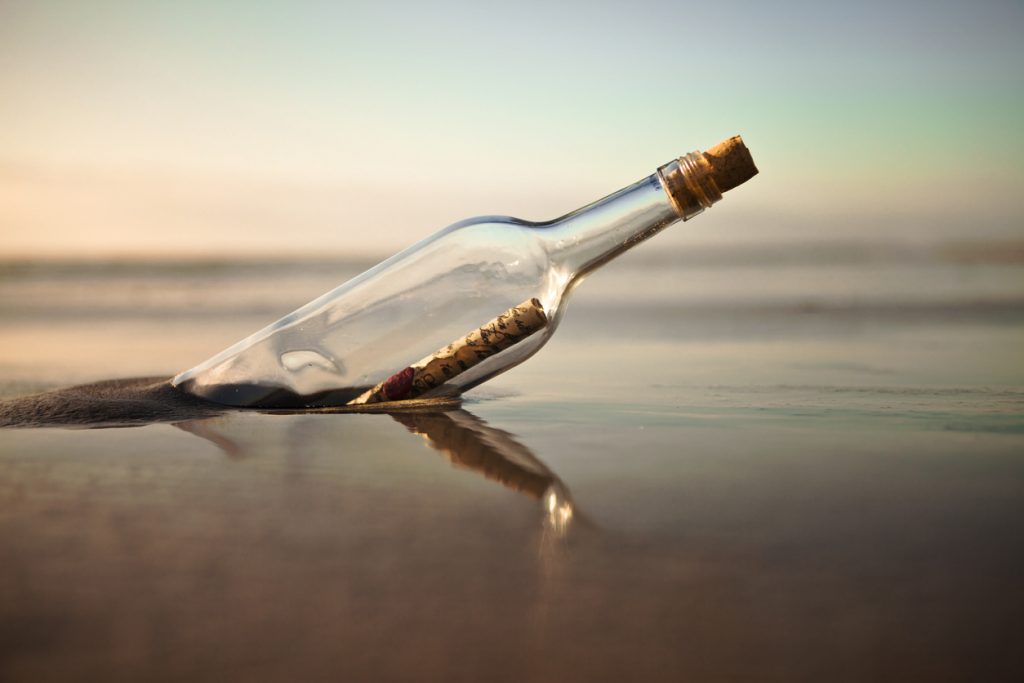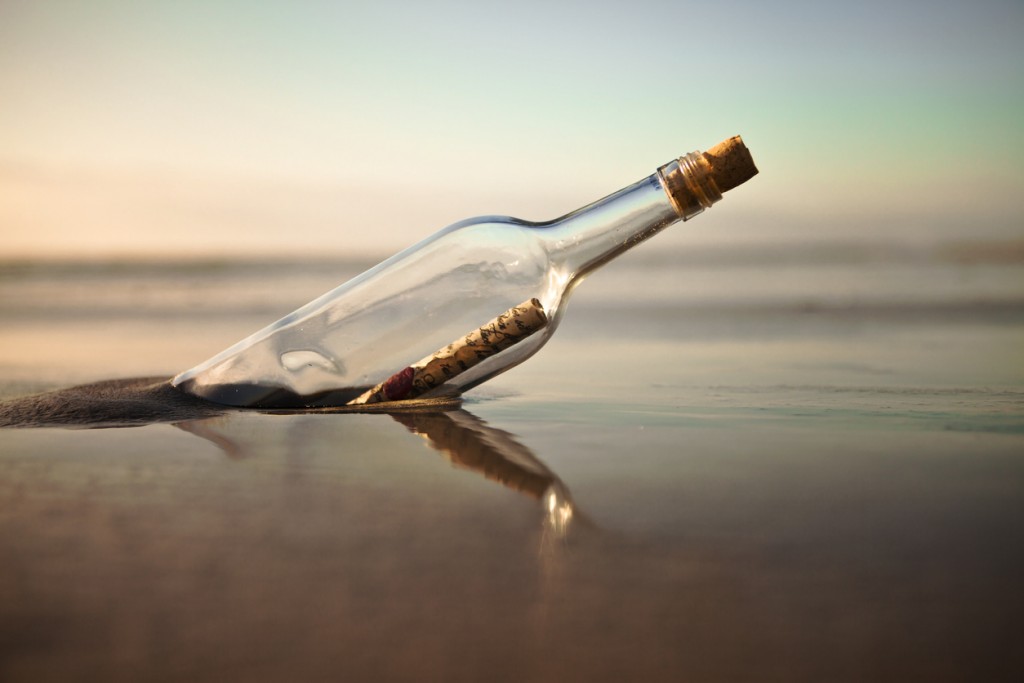According to the insurance company Lloyd’s of London, most messages found in bottles are fakes. These, however, are not.
Last Words
On April 11, 1912, 19-year-old Jeremiah Burke and his cousin Nora Hegarty boarded the RMS Titanic in Ireland. Two of Burke’s sisters had already immigrated to the U.S., and he and Nora were planning to join them in Boston. Before Burke left for the ship, his mother gave him a bottle of holy water for good luck. It didn’t work: neither Burke nor his cousin survived when the Titanic sank on April 15. A year later, a man found the bottle washed up on the beach at Dunkettle, not far from where the Burke family lived. Inside was a note that read, “From Titanic. Good Bye all. Burke of Glanmire, Cork.” The note remained displayed in the Burke family home for nearly 100 years; they donated it to a museum in 2011.
Mysterious Ways
“Brother” George Phillips, known as the “Whiskey Bottle Evangelist,” used bottles to preach. In April 1940, the recovering alcoholic was inspired by driftwood he saw floating along the beach. “God spoke to my heart there,” Phillips said. He started collecting old whiskey bottles from dumps, placing gospel tracts (religious pamphlets) and return address cards inside each one and putting the bottles into Puget Sound, near his home in Tacoma, Washington. Initially he placed them by hand, but by 1941 he’d enlisted sailors on outgoing ships to drop the bottles for him.
Over a period of 20 years, Phillips estimated that he’d sent out around 40,000 bottles and received 2,000 replies from 40 different countries.
Good For You!
In 1954 Guinness Exports Ltd. launched an advertising promotion called the “Bottle Drop.” Fifty thousand Guinness bottles, each with a card inside asking the finder to mail it back to Guinness to receive a reply, were dropped from ships around the world. The company received cards from England, the Bahamas, Tahiti, and Mexico, among other countries. The promotion—which included the message “Guinness is Good for You!” in red letters—was so successful that they did it again in 1959, in celebration of the company’s 200th anniversary. This time, Guinness dropped 150,000 specially made bottles into the Atlantic Ocean, each containing a scroll from “the Office of King Neptune,” a booklet with the company history, instructions on how to turn the bottle into a table lamp, and an ad for Ovaltine. Fifty years after the drop, bottles are still being found. Among the replies: “I was walking along the isolated beach south of the Mundrabilla Road House when I found your bottle. Myself and all the people of Mundrabilla (all five of them) love Guinness.” It was signed by Australian Geoff Gibson.
Built by Prisoners
In 2009 workers renovating a building near the site of the Auschwitz death camp found a bottle bricked into a wall. Inside was a penciled note dated September 20, 1944. It read “Air raid shelter for the T. W. L. personnel. Built by prisoners” and listed the names and hometowns of seven men, ending with “all age 18 to 20.” The Auschwitz-Birkenau Museum tracked down some of the men on the list and found that they had been forced to build an aircraft shelter for the Nazis. During construction, the men hurriedly wrote the note, sealed it in a bottle, and placed it inside one of the walls. Survivor Wacław Sobczak told reporters, “The Germans killed the sick and the weak. I didn’t think we’d survive. We wanted something of ourselves to remain behind, even if it was only that bottle.” Five of the seven men survived the camps. The fates of the other two are unknown.
Saved by the Bottle
The Lennie, a ship out of Bristol, England, was hijacked by its crew in 1875. The mutineers murdered the captain and the first and second mates and ordered the steward, a Belgian named Van Hoydonck, to pilot the ship to Gibraltar. Under threat of death, Van Hoydonck agreed…but secretly had the cabin boy write 24 notes, which Van Hoydonck put in 24 bottles. Then he steered the ship toward France and tossed the bottles overboard. Amazingly, the French navy found one and sent a warship to investigate. Outgunned, the mutineers surrendered and were arrested and sent to England, where they were tried for murder and hanged. As for Van Hoydonck, he opened a restaurant in England, got married, and never sailed again.
Looking for Love
While sailing on the open sea in 1955, a young Swedish man named Ake Viking addressed a message in a bottle to “Someone Beautiful and Far Away” and ended the note with, “Write me, whoever you are.” Two years later, Viking received a letter from a young Italian woman named Paolina. “I am not beautiful,” she wrote, “but it seems so miraculous that this little bottle should have traveled so far and long to reach me that I must send you an answer.” The two began a correspondence, and Viking sailed to Sicily to meet Paolina in person. He thought she was beautiful, and they were married soon after.









